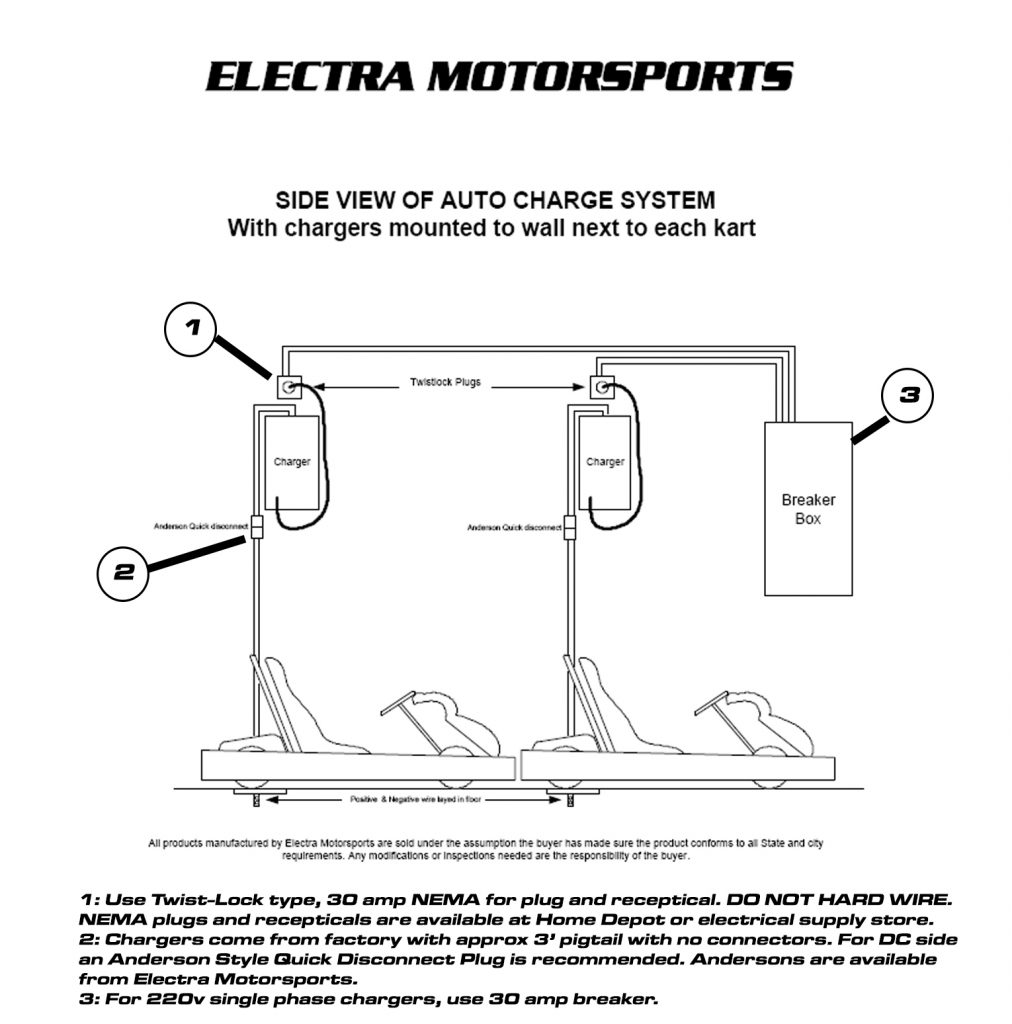


The diagram above displays 3 different options for how you can charge your karts. The best, and most common method is the yellow row in the center (option 1).
Option 1 – Auto Charge.
The auto charge system works by using 1 battery charger per kart, with the chargers mounted on a wall as close to the karts as possible (Ideally less than 30′ away). The DC output wires are run through channels in the floor (cut or conduit) to copper pads placed in the charging stall for the kart. The smart charger only turns on when it senses a kart is above it, and it charges the batteries through a set of “feelers” that extend down from the kart much like a slot car would work. These feelers don’t touch the track, they only reach the copper pads.
Option 2 – Auto Charge with split work chargers.
Option 2 works the same as option 1, but you can save startup costs by splitting 1 charger to 2 sets of charging pads. This option is only recommended as a cost saving measure, as it splits the charging between 2 karts, therefore only charging at half the charger’s capabilities and forcing the charger to ignore battery charge status of each individual kart, which will cause excess wear on the batteries.
Option 3 – Manual Plug In Method.
Plugging each kart in manually is a much more labor intensive way of charging the karts, but some locations prefer this method. It requires an employee to plug in each kart as it drives in, and unplug each kart before they drive out. This method works fine, it just simply takes extra man power, and mistakes made by employees are more costly.

Zivan battery chargers are made to order in Italy to suit the voltage in your building (220V single phase, 220V 3 phase, 440V, etc). Some models are available off the shelf from the importer and servicer here in the United States, but typically not in quantities enough to fulfill the opening of a new karting facility. The manufacturing process takes approx. 90 days. When planning for the installation of your chargers, it is best to plan to mount them on a wall (vertically) as close as possible to the pit lane, and if possible directly in line with the kart it is charging. Because the chargers are European Spec., they do not come with a UL rating, and therefore must not be hardwired into the building. Each charger must utilize a twist lock NEMA plug (or equivelant) on the input side, and a quick disconnect plug for the DC side (also known as an Anderson plug, or SB).

